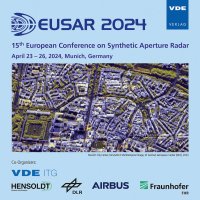Comparison of Indirect Surrogate Models in a Very Large Scene SAR Simulator for Uncertainty Propagation
Conference: EUSAR 2024 - 15th European Conference on Synthetic Aperture Radar
04/23/2024 - 04/26/2024 at Munich, Germany
Proceedings: EUSAR 2024
Pages: 6Language: englishTyp: PDF
Authors:
Houret, Thomas; Leveque, Olivier; Mbow, Fatou; Trouve, Nicolas; Husson, Xavier; Jouade, Antoine
Abstract:
The simulation of radar systems, particularly Synthetic Aperture Radar (SAR) imaging applications, presents unique challenges. One of these is the propagation of uncertainty related to the reflectivity of surface materials in the scene through the SAR image simulator. This study aims to propagate uncertainty through EMPRISE(r) SAR image simulator and understand its impact on the simulated SAR image. Given the time-intensive nature of EMPRISE(r), we have forgone traditional Monte Carlo simulation in favor of indirect stochastic surrogate models. This paper presents a comprehensive comparison of three surrogate models: Polynomial Chaos Expansion (PCE), Radial Basis Function (RBF), and Kriging. Our findings indicate that, when considering prediction fidelity, training time and the potential for further analyses such as sensitivity, the PCE model emerges as the best choice. The PCE model not only demonstrates superior performance but also offers valuable insights in the context of uncertainty propagation, as described in the final sections of this paper.


